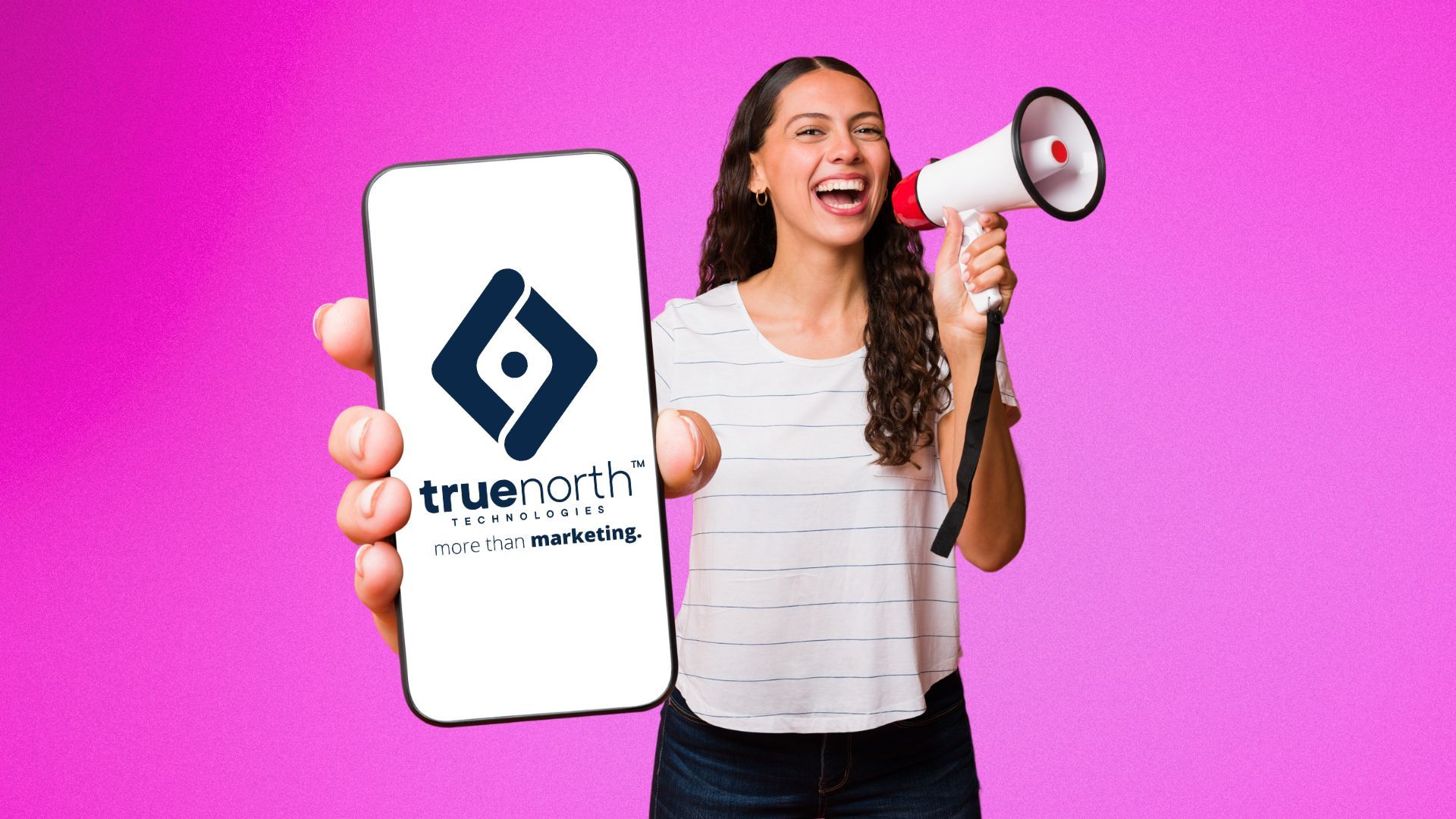Blog
True North Technologies Blog
All Blogs

Search engine optimization (SEO) has come a long way from simply stuffing pages with keywords. Today, search engines are far smarter, powered by artificial intelligence (AI) that analyzes, interprets, and ranks content based on real-world relevance. If you’ve ever wondered why some websites consistently appear at the top of Google while others lag behind, AI is a huge part of the answer. In this blog, we’ll explain how AI helps search engines understand your website better and why integrating AI-friendly practices like structured data can boost your online visibility. The Role of AI in Modern Search AI allows search engines to move beyond literal keyword matching. Instead of only scanning for exact phrases, AI evaluates: Context and meaning: Understanding what your content is actually about. User intent: Determining if your page answers the searcher’s question. Content quality: Evaluating whether your website provides value, clarity, and expertise. Behavior signals: Analyzing click-through rates, time on page, and bounce rates to assess usefulness. Google’s AI models are designed to interpret language more like a human does. This means search engines can understand nuances, synonyms, and even implied meanings, making AI critical in determining which websites deserve top placement. How Structured Data Fits In While AI is powerful on its own, it performs best when combined with structured data, such as JSON-LD schema markup. Structured data helps AI interpret the meaning of your website’s content more accurately. For example: Without structured data, a page about a landscaping company might just look like a block of text. With JSON-LD schema, AI can see: Business type: Landscaping Service Services offered: Lawn Care, Tree Trimming, Garden Design Location and hours Reviews and ratings This extra context allows search engines to display rich results in search listings, making your business more visible and clickable. Why AI + Structured Data Matters Integrating AI-friendly SEO practices like schema markup has several benefits: 1. Enhanced Search Visibility Rich results like star ratings, FAQs, and event listings help your page stand out in search. AI can identify the most relevant content and present it in ways users are more likely to click. 2. Improved User Experience When AI better understands your content, it can match users with the pages that best answer their questions, creating a smoother journey from search to conversion. 3. Higher Click-Through Rates (CTR) Pages with structured data often see higher CTR because search results are more informative and visually engaging. 4. Future-Proof SEO As AI becomes more central to search engines, websites optimized for AI understanding will outperform competitors who rely solely on traditional SEO techniques. Final Thoughts AI is no longer the future of search but it’s the present. The better search engines understand your website, the more likely they are to rank it prominently and deliver it to the right audience. By combining AI-friendly strategies with structured data implementation, your website becomes not only more visible but also more relevant, more clickable, and more effective at converting visitors into customers. Ignoring AI and structured data means leaving potential traffic and revenue on the table. Embrace it, and your website can work smarter, not harder, in today’s competitive search landscape.

In today’s fast-paced digital world, people don’t just want information, they want experiences. And the most powerful way to deliver those experiences is through visual storytelling. Whether it’s a striking photo, a behind-the-scenes video, or an animated explainer, visual content has the ability to capture attention, spark emotion, and move audiences to action in ways words alone cannot. At True North Technologies , we believe storytelling is the heartbeat of effective marketing. Here’s why visual content is such a critical part of that story and how your business can use it to make a lasting impact. Why Visuals Matter in Storytelling The human brain processes images 60,000 times faster than text. This means that when your audience sees a compelling photo or video, they absorb and connect with your message almost instantly. Pair that with the fact that people retain 80% of what they see (compared to only 20% of what they read), and it’s easy to see why visuals are the backbone of digital storytelling. Visuals also add depth to your narrative. A photo of your team working together says “collaboration” without needing a single caption. A video testimonial from a customer brings authenticity that written words can’t fully capture. By layering images and video with written content, your story becomes more immersive, memorable, and impactful. The Emotional Power of Visual Content Storytelling isn’t just about facts—it’s about feelings. Visuals tap into emotions quickly and effectively. Consider these examples: Photos : A vibrant product shot creates desire. A candid employee photo creates trust. Videos : Music, motion, and facial expressions stir emotions, making your story relatable. Graphics & Animation : Simplify complex ideas and make them accessible. By evoking emotions like excitement, trust, or even nostalgia, visuals create a connection that drives loyalty. This emotional layer is what transforms passive viewers into engaged customers. Visual Storytelling Across Digital Platforms Every platform your business uses is an opportunity to tell your story visually: Websites : First impressions count. Hero images, banners, and explainer videos introduce your brand instantly. At True North Technologies, we design websites that integrate photography and video seamlessly to keep visitors engaged longer. Social Media : Eye-catching visuals are the key to standing out in crowded feeds. From Instagram reels to LinkedIn infographics, strong visuals encourage shares, likes, and comments. Explore how our Social Media Management services can help maximize your presence. Email Campaigns : Emails with visuals have significantly higher click-through rates. Including photos, GIFs, or short videos makes your message more engaging and memorable. Digital Ads : A well-designed ad with striking visuals grabs attention and drives conversions. Pairing imagery with precise targeting increases ROI. When used consistently across these platforms, visuals create a cohesive brand identity that audiences can instantly recognize. Visual Content and SEO: A Winning Combination Visual storytelling isn’t just about aesthetics, it’s also a critical component of search engine optimization (SEO). Optimized images and videos improve your website’s performance by: Increasing time-on-page Lowering bounce rates Appearing in Google Image and Video search results Improving accessibility with alt text and descriptive captions At True North Technologies, our SEO strategies integrate visual content to ensure your brand not only looks great but also ranks higher in search results. Practical Tips for Strong Visual Storytelling If you’re ready to make your content more visual, here are some practical steps to get started: Invest in Professional Photography & Videography – High-quality visuals elevate your brand above competitors. Be Authentic – Use behind-the-scenes photos or real customer stories to build trust. Stay Consistent – Align colors, styles, and tone across platforms to reinforce brand recognition. Focus on Your Audience – Tailor visuals to the preferences and behaviors of your target market. Measure and Refine – Track engagement metrics to see what resonates and refine your strategy accordingly. Why Work with True North Technologies? Visual storytelling requires more than just pretty pictures—it requires strategy. At True North Technologies, we combine creative visuals with data-driven insights to craft stories that align with your business goals. Our team can help you: Develop a unified brand aesthetic Capture professional photos and videos Integrate visuals into websites, ads, and social media Optimize visual content for SEO performance Build scalable marketing systems that grow with your business By blending creativity, technology, and strategy, we help businesses tell stories that inspire action. Final Thoughts The power of visual content in digital storytelling cannot be overstated. It’s the difference between being noticed and being remembered. By integrating photography, videography, and graphic design into your marketing strategy, you can create stories that resonate deeply with your audience and drive measurable results. Ready to transform your brand’s story? Explore our Services or Contact Us today to see how True North Technologies can help bring your story to life through the power of visuals.

When most business owners think about SEO, their minds jump straight to keywords, backlinks, and content creation. And while those are still important, there’s another powerful factor quietly shaping how your website performs in Google search results: structured data, specifically JSON-LD. If you’ve never heard of it, you’re not alone. Many businesses, even those actively investing in SEO completely overlook this hidden boost. The good news? Once implemented, JSON-LD can dramatically improve how search engines interpret and present your site, helping you stand out from competitors and attract more clicks. What Exactly Is JSON-LD? JSON-LD (JavaScript Object Notation for Linked Data) is a type of structured data markup. Think of it as a translator between your website and google. While humans can easily read your page and understand context, search engines need a little extra help. JSON-LD provides that help by telling Google what your content means, not just what it says. For example: A human can tell that “Main Street Coffee” is a coffee shop. Google only knows its text, unless you use structured data to label it as a Local Business with a specific location, hours, and menu. That’s where JSON-LD comes in. It helps search engines display rich results (sometimes called “rich snippets”) like star ratings, FAQs, event times, recipes, product prices, and more. Why Most Businesses Ignore JSON-LD There are two big reasons structured data is often skipped: It sounds too technical. Business owners hear “schema markup” or “JSON-LD” and assume it’s something only developers need to worry about. It’s not as visible as keywords. Because you don’t “see” structured data when browsing a website, it’s easy to assume it doesn’t matter. But ignoring it leaves opportunity on the table. Google itself has confirmed that structured data helps search engines better understand your site and can unlock enhanced visibility in search results. The Real Benefits of JSON-LD for SEO So, what happens when you actually implement JSON-LD on your website? Here are the biggest advantages: 1. Increased Visibility in Search Rich results like product images, reviews, or FAQs make your listing stand out. A plain blue link is easy to scroll past, but a listing with stars, pricing, or a Q&A section catches the eye. 2. Higher Click-Through Rates (CTR) More visibility means more clicks. Studies show that websites with rich results consistently earn higher CTR compared to those without. 3. Future-Proof SEO Search is evolving quickly with AI and voice search. Structured data makes your site easier for these technologies to interpret, setting you up for long-term success. 4. Better Local Search Performance For local businesses, JSON-LD can highlight hours, reviews, and location details directly in search which is crucial for customers deciding where to go next. A Simple Example Let’s say you run a local coffee shop. Without structured data, Google sees your page as just text: “We’re open Monday–Friday, 7am–6pm.” With JSON-LD, you can tell Google: Business type: Coffee Shop Address: 123 Main Street, Lincoln, NE Hours: Mon–Fri 7am–6pm Menu: Linked to your site The result? When someone searches “coffee shop near me,” your business has a higher chance of showing up with enhanced details that grab attention. Why Now Is the Time to Act With AI-powered search rolling out and Google continually prioritizing user experience, structured data isn’t optional anymore, it’s becoming the standard. Businesses that add JSON-LD now will gain a competitive advantage, while those who wait risk falling behind. And the best part? Unlike ongoing SEO tasks like blogging or link building, structured data setup is typically a one-time project that delivers lasting benefits. Final Thoughts SEO is about more than just ranking; it’s about being noticed and clicked. JSON-LD may be behind the scenes, but its impact on how your business shows up online is front and center. If you’ve been investing in SEO but aren’t seeing the results you expected, structured data might be the missing piece. Don’t ignore this hidden boost. With the right setup, you can turn your website into a search-friendly powerhouse that gets found, clicked, and chosen.

In the fast-paced world of digital marketing, email continues to be one of the most effective ways to reach your audience directly. Unlike social media posts that get buried or ads that get skipped, emails land in your customers’ inboxes, giving you a unique opportunity to build real connections, inspire trust, and drive action. At True North Technologies , we specialize in helping businesses craft email marketing campaigns that not only get opened but actually convert, turning casual readers into loyal customers and advocates. If you’re ready to unlock the full potential of your email marketing, you’ve come to the right place. The Power of a Strong Subject Line Your subject line is your first impression and your chance to grab attention. A good subject line should be clear, relevant, and enticing enough to make someone want to open your email. Personalizing it with the recipient’s name or referencing their interests can boost open rates dramatically. Think of it as an invitation to a conversation rather than a sales pitch. Personalization and Segmentation: Speaking Directly to Your Audience Generic emails are easy to ignore. Instead, use personalization to make each recipient feel like the message was crafted just for them. This could be as simple as using their first name or as advanced as tailoring content based on past purchases or browsing behavior. Segmentation takes this a step further by grouping your email list into smaller, more targeted segments based on demographics, location, engagement level, or buying habits. When you send relevant, timely messages to each segment, you increase the chances of engagement and conversion. Design and Clear Calls to Action An email that looks cluttered or doesn’t display well on a mobile device can turn readers off quickly. Keep your design clean, simple, and visually appealing with images or graphics that complement your message. Your call to action (CTA) should be clear and stand out. Whether you want recipients to shop a new product, read a blog post, or sign up for a webinar, the CTA guides them on what to do next. Make it obvious and easy to follow, so your readers don’t have to guess. The Magic of Automation Automation lets you send the right email at the right time without manual effort. Welcome emails for new subscribers, reminders for abandoned shopping carts, and follow-ups after purchases keep your brand top of mind and help nurture leads through the customer journey. Automated campaigns can feel like personalized conversations rather than mass marketing blasts, making them a powerful tool to boost engagement and sales. Analyzing and Optimizing for Better Results Sending emails is just the start. Tracking metrics like open rates, click-through rates, and conversions tells you what’s working and what isn’t. Maybe your audience prefers receiving emails in the morning, or maybe certain offers get more clicks. Use this data to continuously improve your campaigns. Optimization is a cycle, test different subject lines, tweak your email design, experiment with send times, and refine your audience segments. The goal is to learn and adapt so every email performs better than the last. Keeping Your Email List Healthy A clean email list is essential for deliverability and engagement. Removing inactive or invalid addresses prevents your emails from bouncing or landing in spam folders. Always respect unsubscribe requests to maintain trust and protect your sender reputation. Regularly cleaning your list helps ensure that your emails reach the people who truly want to hear from you. Authenticity Builds Loyalty Inboxes are flooded with generic marketing messages. What makes your emails stand out is authenticity. Be genuine in your messaging, share real stories, behind-the-scenes glimpses, or customer testimonials. Write in a tone that reflects your brand’s personality, making readers feel like they’re hearing from a trusted friend rather than a faceless company. Authentic emails foster stronger connections and long-term loyalty. How True North Technologies Can Help At True North Technologies, we specialize in crafting email marketing strategies that convert. From creating compelling content and personalized campaigns to automating sequences and analyzing performance, we partner with businesses to turn email marketing into a powerful growth tool. Explore our digital marketing services to learn how we can help your brand engage, convert, and grow through email and beyond.

In today’s digital-first world, your Google Business Profile (formerly Google My Business) is often the first impression potential customers have of your company. Whether you run a local shop, a service-based business, or a large enterprise, optimizing your Google Business Profile can significantly boost your visibility, build trust, and drive more leads. At True North Technologies , we understand the power of local SEO and want to help you maximize your profile’s potential. Here’s a step-by-step guide to get your Google Business Profile working for you. 1. Claim and Verify Your Profile If you haven’t already, the first step is to claim your Google Business Profile. Simply go to Google Business Profile and follow the prompts to either create or claim your business listing. Verification usually happens through a postcard, phone, or email. This step is crucial because only verified businesses can manage their profiles and access valuable insights. 2. Complete Every Section with Accurate Information Google favors profiles that are thorough and accurate. Be sure to fill out every section: Business Name: Use your exact business name as it appears in real life. Address: Provide a precise, up-to-date address to help Google show your business in local search results and maps. Phone Number & Website: Make it easy for customers to contact you or learn more. Hours of Operation: Keep these updated, especially during holidays or special events. Business Category: Choose the most relevant category for your business — this helps Google connect you with the right audience. 3. Add High-Quality Photos and Videos Visual content attracts attention and builds trust. Upload professional photos of your storefront, team, products, or services. Videos showcasing your business in action can also boost engagement. Aim for diverse images that accurately represent your brand and keep your profile lively and inviting. 4. Encourage and Respond to Customer Reviews Reviews are a key factor in local SEO and customer decision-making. Encourage satisfied clients to leave honest reviews on your profile. Take time to respond thoughtfully to all reviews, thank positive reviewers and address any concerns in a professional manner. This interaction shows prospective customers that you care about their experience. 5. Use Google Posts to Share Updates and Offers Google Posts allow you to share timely updates, promotions, events, or news directly on your Business Profile. Regular posts keep your audience informed and signal to Google that your business is active. Think of this as a mini social media platform that appears right in search results. 6. Leverage Q&A to Provide Helpful Information Google Business Profiles include a Q&A section where potential customers can ask questions about your business. Monitor this regularly and provide clear, helpful answers. You can even preemptively add common questions and answers to guide users and reduce friction. 7. Monitor Your Profile’s Performance with Insights Google offers valuable analytics that show how customers find your profile, what actions they take, and where they’re located. Use these insights to adjust your strategy and focus on what’s working best. True North Technologies can help you interpret these data points to drive even better results. Why Work with True North Technologies? Optimizing your Google Business Profile is just one part of a broader digital marketing strategy. At True North Technologies, we specialize in SEO, website development, and reputation management to help your business shine online. If you want expert guidance or hands-on help to get your profile and your entire online presence performing at its best, reach out to us today. Optimizing your Google Business Profile is a powerful way to increase local visibility, attract more customers, and grow your business. Start implementing these tips now to unlock your profile’s full potential. Contact us today!

In today's hyperconnected world, digital advertising isn’t optional, it’s essential. With consumers spending more time online than ever before, businesses that want to stay competitive need to meet their audience where they already are, on social media, in search engines, and across websites and apps. At True North Technologies , we help businesses harness the power of digital ads to increase visibility, generate leads, and drive measurable growth. If your business isn’t investing in digital advertising yet, now is the time to start, and here’s why. What Are Digital Ads? Digital ads are paid advertisements that appear online across platforms like Google, Facebook, Instagram, YouTube, LinkedIn, and more. They can take many forms, including: Search ads (Google Ads) Display ads (banners on websites) Social media ads Video ads Retargeting ads Mobile in-app ads The key advantage? Unlike traditional advertising, digital ads are targeted, trackable, and flexible, giving businesses control over who sees their message and how much they spend. 6 Reasons Digital Ads Are Critical in 2025 1. Your Customers Are Online Over 5 billion people use the internet globally, and many of them browse multiple platforms every day. Whether you run a local business or an e-commerce store, digital ads ensure you show up at the right time, in the right place, to the right people. 2. Highly Targeted Reach Digital advertising lets you pinpoint your ideal customer based on demographics, interests, online behavior, location, and more. Instead of wasting dollars on a broad audience, your ad budget works smarter not harder. 3. Real-Time Performance Tracking With digital ads, you’re never going to guess. You’ll see real-time metrics on impressions, clicks, conversions, and ROI. This transparency allows for continuous optimization and smarter decision-making. 4. Cost-Effective Marketing Whether you're working with a $200 budget or $20,000, digital ads are scalable. You can set daily or monthly caps, pause underperforming campaigns, and focus on high-performing keywords or audiences. It’s one of the most budget-friendly ways to test and grow. 5. Supports SEO and Organic Growth Running paid ads alongside an SEO strategy helps increase brand exposure. When users see your business in both organic results and paid placements, it builds trust and improves click-through rates, especially in competitive industries. 6. Drives Measurable Business Results From driving traffic to increasing sales or generating leads, digital advertising is directly tied to business growth. With a clear call-to-action and optimized landing pages, your ads can guide users straight to conversion. Digital Ads in Action: What We Do at True North Technologies At True North Technologies, we partner with businesses to create digital advertising strategies that are built around your unique goals. Whether you're aiming to increase brand awareness, generate leads, or drive online sales, we focus on delivering measurable results through smart targeting, engaging creative, and continuous optimization. Our team manages every step of the process, from campaign planning and audience research to ad design, performance tracking, and strategic adjustments. We’re not just setting up ads, we’re building a system that works in sync with your overall digital marketing strategy. Real Talk: Digital Ads vs. “Doing Nothing” Some business owners hesitate to invest in ads because they’ve tried it in the past without success or think their organic traffic will carry them. But in 2025, doing nothing is riskier than trying something new. Competitors are already reaching your customers online. If you’re not showing up in search results or social feeds, you’re invisible. And invisibility doesn’t grow revenue. Final Thoughts Digital advertising isn’t just about getting clicks, it’s about driving real business outcomes in a digital-first world. It’s efficient, cost-effective, and essential for any business looking to scale in today’s marketplace. If you're ready to start seeing measurable results from your marketing efforts, we’re here to help. At True North Technologies, we make digital ads easy, strategic, and impactful. Ready to grow your business with digital advertising? Let’s talk!

In the fast-paced world of digital marketing, mobile apps have emerged as a powerful tool for businesses looking to engage their audiences, boost brand visibility, and drive customer loyalty. With smartphone usage continuing to skyrocket, companies can no longer afford to ignore the influence that mobile applications have on consumer behavior and marketing strategies. At True North Technologies , we specialize in custom mobile app development and strategic digital solutions . We’ve seen firsthand how mobile apps are transforming how businesses connect with their audiences, and we’re here to help you stay ahead of the curve. Why Mobile Apps Matter in 2025 Mobile usage is no longer just part of the customer journey, it is the journey. As of 2025, over 64% of web traffic originates from mobile devices, and users now spend more than 3 hours per day in mobile apps. Businesses that invest in mobile app development are tapping into a space where their customers already live, work, and shop. Whether it’s a retail store launching a loyalty app, a restaurant offering mobile ordering, or a service-based company building a scheduling tool, mobile apps give brands direct access to consumers without the distractions of search engines or social feeds. Key Benefits of Mobile Apps in Digital Marketing 1. Enhanced Customer Engagement Mobile apps allow businesses to interact with customers in real time through push notifications, personalized content, and instant support. This level of engagement helps improve customer retention and builds stronger relationships over time. 2. Data-Driven Insights Apps provide a goldmine of data from user behavior and location tracking to purchase history and app usage. With the right analytics in place, marketers can optimize their campaigns and personalize the user experience in ways that simply aren’t possible on traditional websites. 3. Increased Brand Visibility Having a branded app on a user’s device means your logo is seen every day. It’s constant passive exposure. That visibility keeps your business top of mind and reinforces your brand identity. 4. Seamless Integration with Digital Campaigns Mobile apps can be integrated into your broader digital marketing strategy, linking to email campaigns, social media promotions, loyalty programs, and more. 5. Improved Conversion Rates A well-designed app simplifies the path to purchase. With faster load times, streamlined checkouts, and personalized experiences, apps typically convert at higher rates than mobile websites. How Businesses Are Using Mobile Apps Strategically Industries of all kinds are leveraging mobile apps to meet their customers where they are: Retail & E-commerce: Offering app-exclusive discounts and push notifications for flash sales. Restaurants: Enabling mobile ordering, reservations, and reward points. Healthcare: Allowing patients to book appointments and access records via secure mobile apps. Professional Services: Providing client portals, document sharing, and project tracking on the go. Whether you’re a small business or an enterprise brand, mobile apps provide scalable solutions that grow with your business. Custom Mobile App Development with True North Technologies At True North Technologies, we build custom mobile app solutions tailored to your business goals and user needs. We don’t just stop at development. As a full-service digital marketing agency, we also provide guidance on launching your app effectively through integrated marketing strategies including SEO, digital ads, social media, and more . Final Thoughts The rise of mobile apps in digital marketing is more than just a trend, it’s a shift in how brands connect with customers in a mobile-first world. By investing in a custom mobile app, you’re not just keeping up, but you’re standing out. If you're ready to unlock the power of mobile for your business, our team at True North Technologies is here to help. Let’s build something great together. Contact us today.

In today’s digital-first world, your brand reputation isn’t just important, it’s everything. Potential customers trust online reviews and public perception just as much as personal recommendations. That’s why customer reputation management has become one of the most powerful tools for business growth, and at True North Technologies, we’re here to help you take control of it. Whether you’re a local service provider or an online retailer, your success depends on what people are saying about you. Here’s how reputation management can fuel your growth, and how True North Technologies can guide you along the way. Why Customer Reputation Management Matters Before making a purchase, booking a service, or even visiting a website, most customers do one thing first: they Google you. They check your reviews, look for testimonials, and read social media comments. A few negative reviews, or a lack of recent positive ones, can be enough to send them to your competitors. According to research , 87% of customers won’t consider a business with low ratings. Managing your online reputation isn’t just about looking good, it’s about building trust, increasing visibility, and driving conversions. What Is Customer Reputation Management? Customer reputation management is the strategic process of monitoring, influencing, and improving how your brand is perceived online. It involves: Responding to customer reviews (both positive and negative) Encouraging happy customers to leave reviews Monitoring social mentions and brand chatter Ensuring consistency across review platforms like Google, Facebook, and Yelp Promoting testimonials on your website and social media Addressing and resolving customer concerns quickly and professionally At True North Technologies, we offer custom reputation management solutions that are proactive, efficient, and aligned with your brand. The Growth Benefits of Reputation Management 1. Boosts Trust and Credibility A strong online reputation builds consumer confidence. When potential customers see dozens of positive reviews and timely, professional responses to feedback, they’re more likely to trust your business and ultimately choose you. 2. Improves Local SEO Rankings Search engines like Google factor in reviews when ranking local businesses. Businesses with consistent, high-quality reviews and up-to-date profiles are more likely to appear in the Local Pack (those top results with maps and star ratings). This increases your visibility and brings more traffic to your site. Want to know more about how SEO plays a role in your digital growth? Check out our blog on Why Your Business Needs a Strong SEO Strategy in 2025 . 3. Drives More Conversions Reviews act as social proof. When visitors see others had a great experience with your business, they feel more confident converting, whether that means calling for a quote, placing an order, or booking a service. 4. Gives You a Competitive Edge Many businesses still overlook reputation management or don’t have a solid strategy in place. By being proactive, you can stand out in your industry, win more trust, and grow faster than competitors who neglect this key area. Final Thoughts: Reputation = Revenue In today’s competitive market, your online reputation is often your first impression, and sometimes your only one. By taking control of your digital presence and making customer feedback part of your growth strategy, you can turn your reputation into one of your most valuable marketing tools. At True North Technologies, we help businesses build, protect, and promote reputations that drive real results. From strategy to implementation, we’re your partner in long-term growth. Want to grow your business through better reviews and stronger customer trust? Let’s talk about your reputation strategy. Contact us today to schedule a consultation.

At True North Technologies, we know that marketing is about more than just grabbing attention, it’s about creating clarity, trust, and connection. That’s why we go beyond surface-level design and tap into something deeper: visual psychology. One of the most influential concepts in visual psychology is the Gestalt Principles . These principles explain how humans naturally perceive and organize visual information. While they originated in early 20th-century psychology, they’re still incredibly relevant today, especially in video advertising and customer reputation management, two key services we offer . Here’s how understanding how people see helps us create marketing that people remember. Gestalt in Action: Smarter, More Effective Video Advertising Videos are one of the most powerful tools in modern marketing, but only when they’re done right. It’s not enough to have flashy visuals or catchy music. If the message isn’t clear and cohesive, viewers won’t stay engaged, or worse, they won’t remember what your brand was even about. This is where Gestalt principles come in. 1. Continuity: Guiding the Viewer’s Journey In video editing, smooth transitions and visual direction are key. Gestalt’s continuity principle states that the eye naturally follows lines and patterns. We apply this by carefully arranging motion, graphics, and scene transitions to guide the viewer’s focus and ensure that every second feels purposeful. Whether it's the way a product enters the frame or how text moves on screen, we craft flow with intention, so the viewer isn’t confused, distracted, or overwhelmed. 2. Figure/Ground: Making the Message Pop When something important appears in a video, the viewer needs to instantly recognize it. The figure/ground principle helps us do that by separating key elements (like a logo, tagline, or testimonial) from the background with contrast, motion, or placement. This ensures the most critical parts of your message don’t just blend into the noise, they stand out, get noticed, and stick in the viewer’s mind. 3. Similarity & Repetition: Reinforcing Brand Identity Incorporating repeating elements like your brand colors, logo animations, fonts, or even a signature visual style, activates the similarity principle. This makes your video feel unified and strengthens brand recall. It’s a subtle but powerful way to build recognition every time someone watches your ad. Customer Reputation Management: The Psychology of Perception Just like design and video, customer reputation management is about shaping how your audience perceives you, and Gestalt principles play a role here, too. 1. Proximity: Grouping Positive Signals Online, users quickly scan for patterns. When they see a collection of positive reviews grouped together on your website or Google profile, the proximity principle kicks in: they naturally associate these reviews with overall credibility. At True North, we design review displays and testimonial sections that use proximity and layout strategy to emphasize trust at a glance. 2. Closure: Filling the Gaps with Emotion When customers read a few strong, well-written reviews, their brains often “fill in the gaps” using the closure principle. This means they don’t need to read every single review to form a positive opinion; they get a feel for your business from just a few. That’s why we help businesses highlight a curated, consistent set of feedback that reflects their values and service quality. 3. Similarity: Creating Consistency Across Platforms Whether someone reads about your business on Google, Facebook, or your website, the tone and visuals should feel familiar. Using the similarity principle, we ensure your branding, messaging, and even review response style remain cohesive across all platforms. This builds trust and reassures potential customers that your business is legitimate and professional. Why It Works: Designing for Human Behavior At the heart of it all, Gestalt principles are about understanding how people think and see. Whether it's a 15-second video ad or a stream of five-star reviews, we use these principles to design content that feels intuitive, polished, and trustworthy. True North Technologies doesn’t just create marketing materials, but we create experiences that connect. By blending psychology with design, we help your brand make a lasting impression in a crowded digital world. Ready to transform how people see your business? Let’s harness the power of visual psychology to elevate your marketing—from video to reputation and beyond. Contact us today to get started.

Trends, Tools & Tactics for a Winning Strategy In the ever-evolving world of digital marketing, staying ahead of the curve is essential—especially when it comes to social media. In 2025, platforms are smarter, audiences are more selective, and content must be more strategic than ever. Whether you’re a startup or an established company, here’s how to master social media marketing in 2025 and stay competitive. 1. Embrace Short-Form Video as a Core Strategy Short-form video continues to dominate across platforms like TikTok, Instagram Reels, and YouTube Shorts. It’s not just trendy—it’s effective. Brands using video content in their social media strategy are seeing better reach, higher engagement, and stronger brand recall. Pro Tip: Keep videos authentic, mobile-optimized, and aligned with your brand voice. 2. Use AI and Automation Without Losing the Human Touch AI tools are reshaping content marketing—from auto-generating captions to predicting the best times to post. But in 2025, success depends on blending automation with genuine storytelling. AI-driven tools can now analyze user behavior to recommend the best posting times, tailor content to specific audience segments, and even generate video scripts or image suggestions. These tools reduce manual workload and increase the speed of campaign execution—allowing teams to stay agile in a fast-moving landscape. But with all this innovation, there's a caveat: authenticity matters more than ever. Audiences in 2025 can spot generic or robotic content a mile away. The most successful brands are those that use AI to enhance creativity, not replace it. 3. Go Beyond Likes: Prioritize Conversions and Commerce Social media is now a key driver of sales—not just brand awareness. In-app shopping , product tagging, and clickable video content are transforming platforms into storefronts. We help businesses set up and optimize paid social advertising campaigns that are designed to convert, not just attract followers. 4. Diversify Platforms—But Be Strategic Different platforms offer different strengths—Instagram excels at visual storytelling, LinkedIn is ideal for professional thought leadership, and TikTok thrives on entertainment and discovery. Rather than stretching your resources thin by being everywhere at once, focus on building a strong presence where your target audience is most engaged. Then, tailor your content to match the tone, format, and behavior of users on each platform for maximum impact. 5. Data Is the New Creative Your content might be captivating, but if it’s not supported by data, it’s a shot in the dark. A successful social media marketing strategy in 2025 requires the ability to measure performance and adapt quickly. Social platforms now offer advanced analytics that go beyond likes and shares. These analytics offer helpful insights that can help identify: The best days and times to post Top-performing content themes Efficient ad spending options Top trends Goals tied to business outcomes Ready to Elevate Your Brand’s Social Presence? In 2025, success on social media requires more than just being active—it takes intention, creativity, and data-driven execution. Let True North Technologies help you turn your social platforms into a growth engine. Contact us today to schedule a call and start mastering your social media presence.
